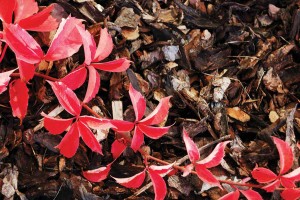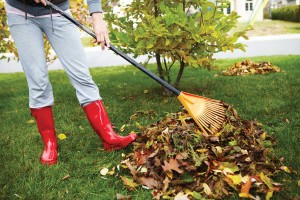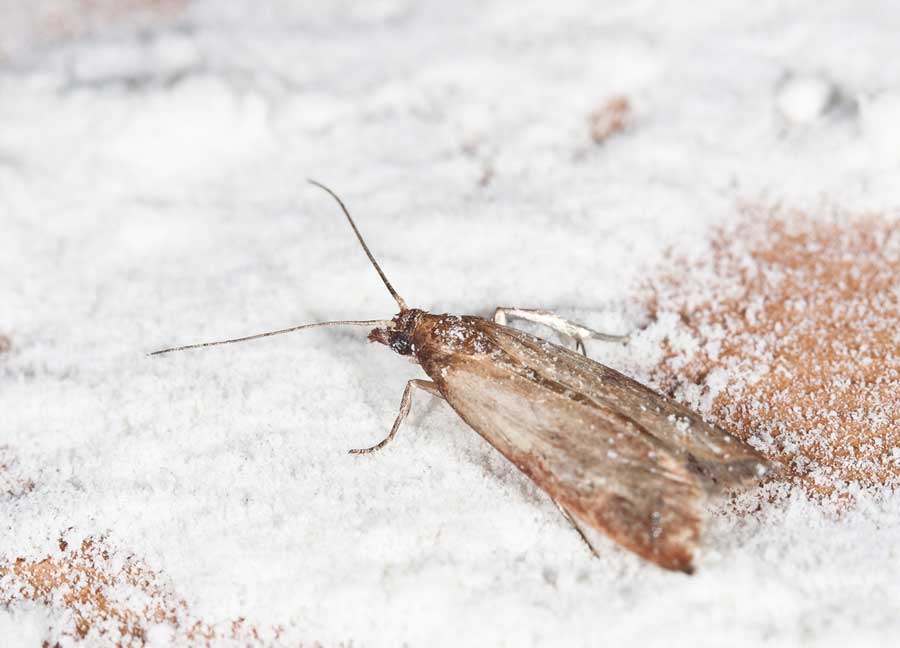Tips for tucking in your garden for winter
01 Oct 2015
 Given last year’s loss of trees throughout the Front Range due to extreme air-temperature fluctuations, getting a garden ready for winter dormancy is prudent. In a normal year, shrubs and trees prepare themselves for winter dormancy through a gradual process in response to shorter days and cooler temperatures. You can help your plants get ready for dormancy by following these steps.
Stop fertilizing in late August to avoid stimulating new growth. (And never overfertilize during the growing season, as this can result in weakened growth, too.)
In September, adjust your automatic sprinkler system to irrigate twice a week instead of three times. When you blow out your system for winter, usually in late September or early October, switch to hand watering once a week.
Before the ground freezes, do a final weeding and remove any debris. Keep mowing as late into fall as the grass grows, because long grass covered by deep snows can develop brown patches in spring.
After plants go dormant, hand water only when the soil is dry several inches below the surface. But continue watering any fall transplants; their root balls should not dry out during their first autumn and winter in the ground.
This is also a good time to prune broken branches and dieback. Wait to do a thorough pruning until just before new growth appears in spring.
Given last year’s loss of trees throughout the Front Range due to extreme air-temperature fluctuations, getting a garden ready for winter dormancy is prudent. In a normal year, shrubs and trees prepare themselves for winter dormancy through a gradual process in response to shorter days and cooler temperatures. You can help your plants get ready for dormancy by following these steps.
Stop fertilizing in late August to avoid stimulating new growth. (And never overfertilize during the growing season, as this can result in weakened growth, too.)
In September, adjust your automatic sprinkler system to irrigate twice a week instead of three times. When you blow out your system for winter, usually in late September or early October, switch to hand watering once a week.
Before the ground freezes, do a final weeding and remove any debris. Keep mowing as late into fall as the grass grows, because long grass covered by deep snows can develop brown patches in spring.
After plants go dormant, hand water only when the soil is dry several inches below the surface. But continue watering any fall transplants; their root balls should not dry out during their first autumn and winter in the ground.
This is also a good time to prune broken branches and dieback. Wait to do a thorough pruning until just before new growth appears in spring.
 In October, stop deadheading flowers. Luckily, our perennial grasses and flowers fared much better than trees and shrubs last winter, because they’re not as susceptible to air-temperature fluctuations, which brings us to an important point. The reason they fared better is because their growing points, where new cells develop, were tucked away beneath mulch.
It’s very important to mulch again in late fall to keep soil temperatures from swinging erratically, which can cause perennials and grasses to weaken or die. Anything light and fluffy works, such as pine needles (but they’re a pain to clean up come springtime), wood chips, straw, hay or leaves. Rake up tree leaves and lightly run the mower over them to shred them into mulch. Liberally spread the mulch beneath shrubs and trees, and over flower and vegetable beds to a depth of 1 to 2 feet.
A lightweight frost blanket is a good option for gravel-mulched rock gardens.
In October, stop deadheading flowers. Luckily, our perennial grasses and flowers fared much better than trees and shrubs last winter, because they’re not as susceptible to air-temperature fluctuations, which brings us to an important point. The reason they fared better is because their growing points, where new cells develop, were tucked away beneath mulch.
It’s very important to mulch again in late fall to keep soil temperatures from swinging erratically, which can cause perennials and grasses to weaken or die. Anything light and fluffy works, such as pine needles (but they’re a pain to clean up come springtime), wood chips, straw, hay or leaves. Rake up tree leaves and lightly run the mower over them to shred them into mulch. Liberally spread the mulch beneath shrubs and trees, and over flower and vegetable beds to a depth of 1 to 2 feet.
A lightweight frost blanket is a good option for gravel-mulched rock gardens.
It’s a Wrap
To protect against sunscald, windburn, drought and transplant shock, spray specialty evergreens, like dwarf conifers, lavender cotton, arborvitae, broad-leafed evergreen azaleas, rhododendrons, boxwoods, euonymus and hollies, with an anti-transpirant like Wilt-Pruf or Wilt Stop. Both are natural, nontoxic products derived from pine tree resin. Apply it in late October after several frosts to ensure these species are fully dormant. Research demonstrates mixed results with these products, but some local gardeners swear by them.
Wrap young trees with a trunk diameter of less than 4 inches with tree wrap to reduce sunscald that can result in deep trunk fissures. Be sure to remove the wrap promptly next spring to prevent insects from taking up residence. Or put a cylinder around the trunk of young trees and pack it with straw or shredded leaves.
One nice thing about tucking in your garden for winter is you can stop cutting back perennial flowers and ornamental grasses, as this affords some protection to the plant’s roots. Wait until late winter or early spring to resume this chore. Let berries, seedpods and rose hips overwinter on plants to give wildlife shelter and food during the harshest months.
Finally, wash and store your garden gloves and tools. Empty and store flowerpots, drain the fuel tank on your lawn mower, roll up and store garden hoses, and put away sprinkler attachments and nozzles.
Then start dreaming of next year’s garden and all the lovely plants that will greet you come spring!
Centennial gardener Marcia Tatroe is passionate about planting drought--tolerant natives for a gardening aesthetic unique to this region.
Both are natural, nontoxic products derived from pine tree resin. Apply it in late October after several frosts to ensure these species are fully dormant. Research demonstrates mixed results with these products, but some local gardeners swear by them.
Wrap young trees with a trunk diameter of less than 4 inches with tree wrap to reduce sunscald that can result in deep trunk fissures. Be sure to remove the wrap promptly next spring to prevent insects from taking up residence. Or put a cylinder around the trunk of young trees and pack it with straw or shredded leaves.
One nice thing about tucking in your garden for winter is you can stop cutting back perennial flowers and ornamental grasses, as this affords some protection to the plant’s roots. Wait until late winter or early spring to resume this chore. Let berries, seedpods and rose hips overwinter on plants to give wildlife shelter and food during the harshest months.
Finally, wash and store your garden gloves and tools. Empty and store flowerpots, drain the fuel tank on your lawn mower, roll up and store garden hoses, and put away sprinkler attachments and nozzles.
Then start dreaming of next year’s garden and all the lovely plants that will greet you come spring!
Centennial gardener Marcia Tatroe is passionate about planting drought--tolerant natives for a gardening aesthetic unique to this region. 











